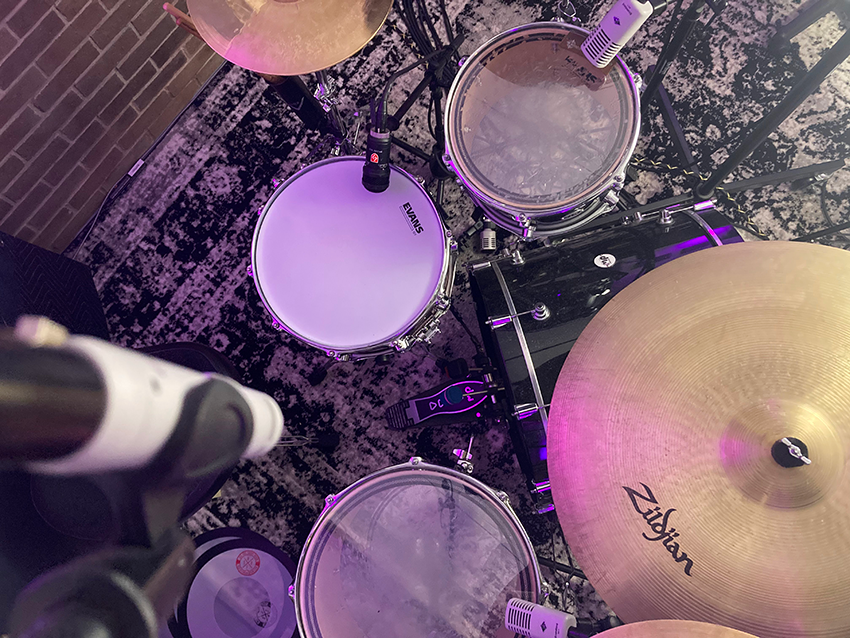Drums drive the rhythm and energy of a track, but getting them to cut through a dense mix without overpowering other elements can be a challenge. Whether you’re mixing a hard-hitting rock track or a tight, modern pop beat, keeping your drums punchy and present requires a balance of EQ, compression, transient shaping, and strategic sidechaining. Let’s break it down.
Dialing in the Drum Mix
A solid drum mix starts with careful level balancing and EQ moves that ensure clarity without unnecessary buildup in problem areas. The kick drum serves as the foundation of the kit and needs both low-end weight and a defined attack. A high-pass filter can remove sub-bass rumble below 30 Hz, while a gentle boost around 60 Hz adds weight. To bring out the beater’s attack, a slight boost in the 2–4 kHz range is helpful. For a snare that cuts, emphasizing the 1–3 kHz range while controlling muddiness around 250–500 Hz is key. If more body is needed, a subtle boost around 200 Hz can help. Your DAW’s stock EQ should work fine, but if you’re looking for a more in-depth EQing experience trusted by the pros, the FabFilter Pro-Q is a fantastic option.
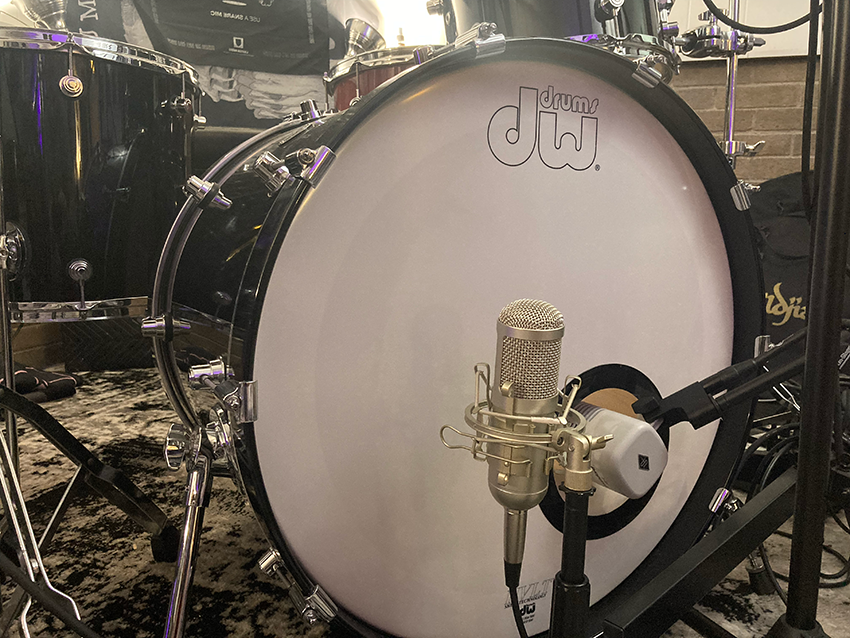
This is why so many producers and engineers rely on multiple kick drum microphones. A typical combination might include a Shure Beta 52A inside the kick to capture the beater smack, and a condenser like the Warm Audio WA-87 R2 on the resonant head to get all the warmth on the low end. This gives you increased versatility at the mixing stage to balance a kick drum in the mix.
Toms should have enough presence to punch through without muddying the mix; cutting around 300 Hz reduces boxiness, while a boost around 5 kHz enhances clarity. Cymbals and overheads provide high-end sparkle but can quickly become harsh, so a gentle high-shelf boost around 10 kHz can add shine, though any resonant peaks may need cutting.
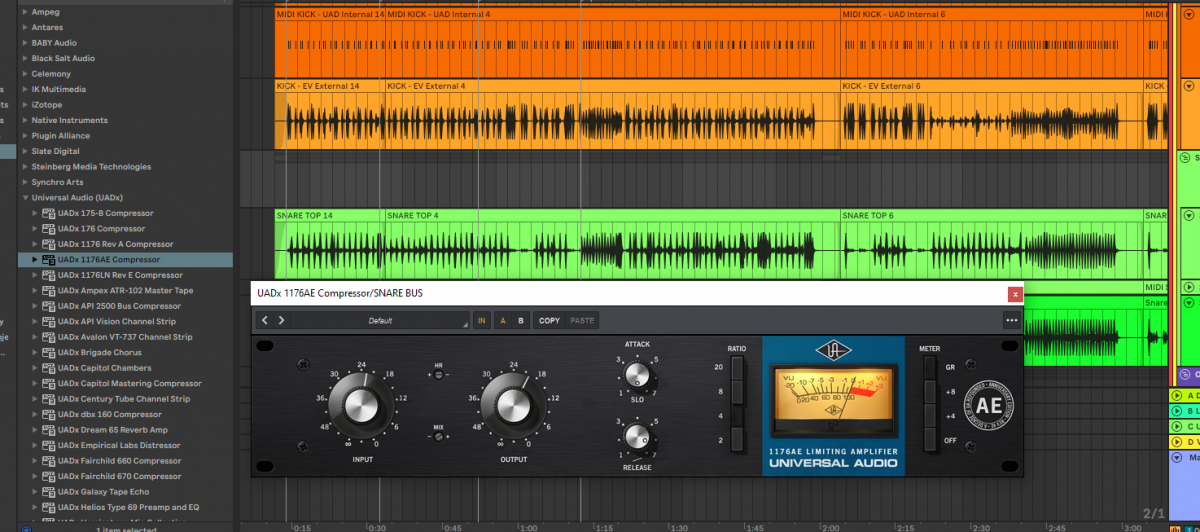
Compression for Impact
Compression is key to adding punch and control. For the kick and snare, a fast attack and release help maintain transient impact while controlling dynamics, with a ratio of 4:1 serving as a solid starting point. Parallel compression keeps the drums feeling lively by blending in a heavily compressed drum bus using an 1176-style compressor (such as one from Universal Audio’s 1176 Collection) with a high ratio and fast attack/release settings. Lightly compressing the drum bus with a VCA-style compressor like the SSL G-Bus can help glue everything together.
Shaping Transients and Sidechaining
Transients are the impact of sound you perceive within a mix. Transient shaping can enhance attack and sustain without over-compressing. Many DAWs include stock transient shapers, or you can use Universal Audio’s SPL Transient Designer. Increasing the attack on the kick and snare helps them stand out without needing excessive volume, which in turn would add more compression. It’s a slippery slope, and too much compression can lead to a flat sounding mix, or one that’s just too “pump-y.”
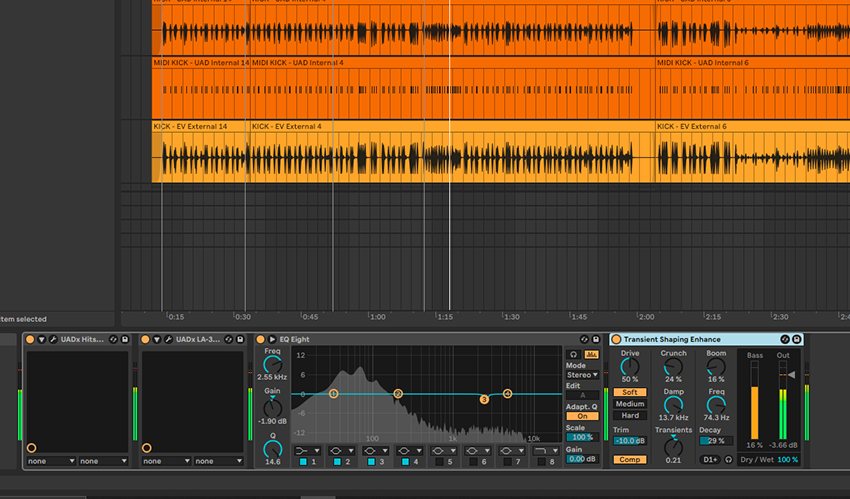
Drums and bass often compete for space in the low end, so sidechain compression ensures they coexist without stepping on each other. Using a compressor on the bass track triggered by the kick drum subtly lowers the bass volume when the kick hits, preventing masking and keeping the low end clean. A fast attack and moderate release (around 50–100 ms) work well. For extra clarity, sidechaining other elements like pads or synths to the drum bus ensures rhythmic elements retain presence.
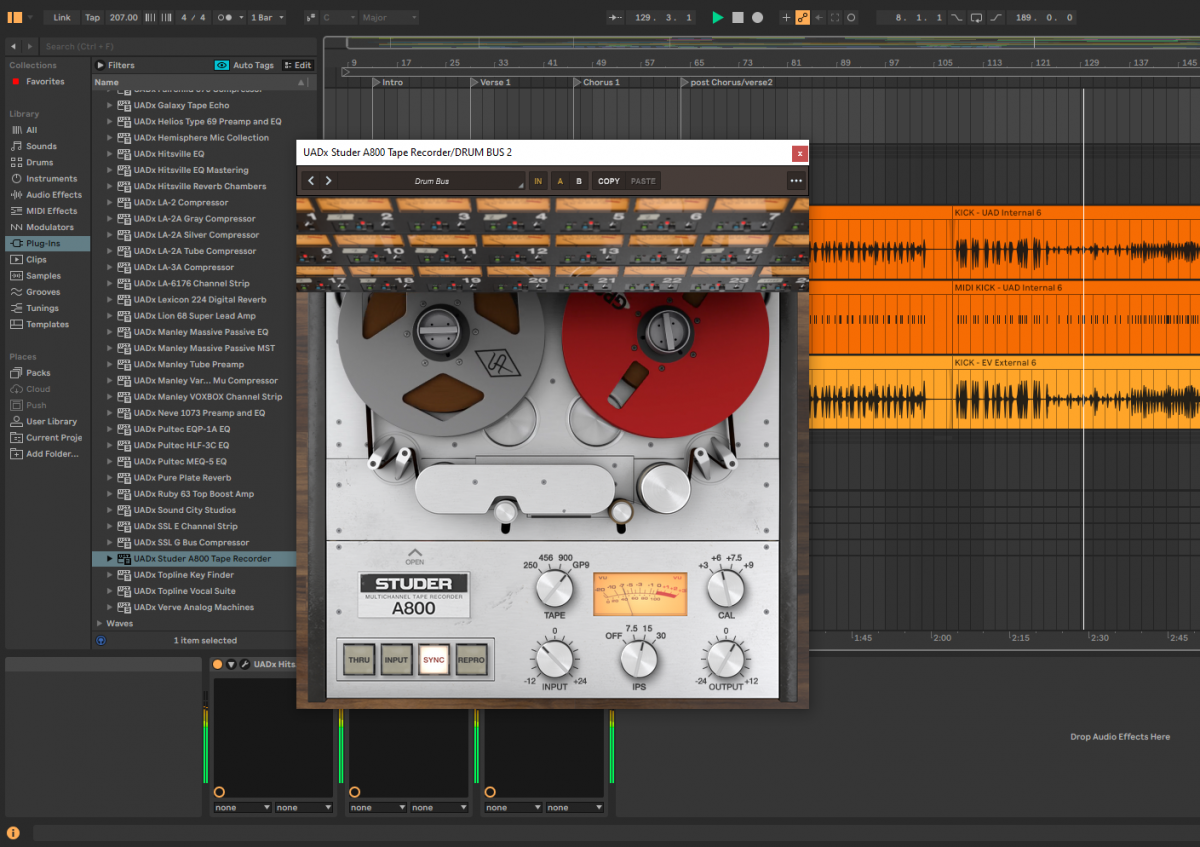
The Final Polish
Once your mix is balanced, adding subtle touches enhances the drum sound further. A short plate reverb on the snare adds depth without washing it out, and using pre-delay keeps transients crisp. Light harmonic saturation with a tape emulation (as achieved with Universal Audio’s Studer A800) adds warmth and cohesion. Finally, automation can be used to ride faders on drum fills and key moments to maintain excitement and impact.
When done right, a well-mixed drum kit brings energy and movement to a track. By carefully balancing EQ, compression, transient shaping, and sidechaining, you can ensure your drums stay punchy and present in any mix. Happy mixing!

